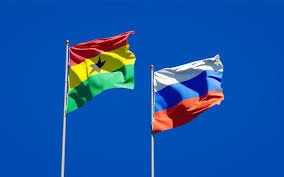The Ghana-Russia Centre for Commerce and Relations (The Centre), a not-for-profit organisation working closely with the Russian Embassy in Ghana, is looking forward to furthering mutually beneficial and progressive bilateral relations between the two countries.
The Chief Executive Officer (CEO) of The Centre, Dr John Aggrey, told myjoyonline.com that the Russian government expects a renewal of prospects with Ghana’s new administration.
“With the election of His Excellency John Mahama as President of the Republic of Ghana, renewed attention is being given to opening the country’s foreign policy, including relations with the Russian Federation. With the official inauguration of the president on January 7, we expect a renewal of prospects and ideology regarding our interactions with Russia,” he said.
Regarding future cooperation between Russia and Ghana, Dr Aggrey stated, “We are counting on the gradual development of relations under the leadership of the new government.”
During his inauguration ceremony in Accra on Tuesday, January 7, President John Mahama reassured the world of his administration’s commitment to fostering a thriving and inclusive business environment. He declared that the country is “open for business again.”
The ceremony was attended by several Heads of State and a high-level delegation of foreign dignitaries, including three Vice Presidents, four Ministers, and 24 envoys, including the Russian Embassy in Ghana, demonstrating significant diplomatic support for Ghana's presidential transition.
Dr Aggrey expressed hope that the presence of the diplomatic community reflects the president’s commitment to working with the diaspora, with Russia being an integral part of this effort.
In recent times, Russia has been expanding its relationships with African countries, and for Dr Aggrey, Ghana is a preferred investment hub for the Russian business community.
He believes that strengthening ties between the two nations will not only enhance the geopolitical landscape but also have a positive impact on both populations in terms of language, culture, cuisine, and tourism.
Credit: Albert Kuzor

